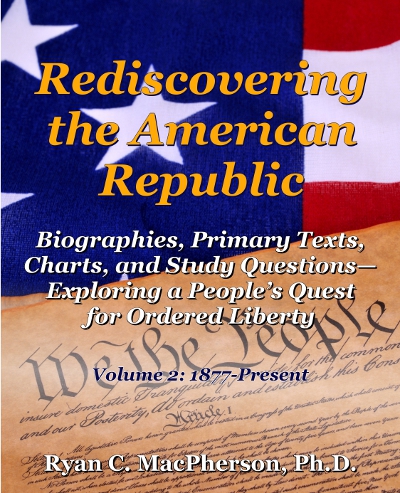Recent developments in science and technology have increasingly blurred the distinctions between the natural and the artificial, the human and the non-human, the person and the thing. Prosthetic limbs, pace makers, and animal-to-human organ transplants have improved the quality and prolonged the duration of many people’s lives, but such advances in biomedical technology also have raised some troubling questions about the nature and purpose of human life. Science fiction writers frequently explore the confusing boundaries between the living, the artificial, and the dead—themes that though set as fiction are fast approaching the realm of factual possibility. The same people who celebrate an animal-to-human heart transplant as a noble gift of life may cringe at the thought of an animal-to-human brain transplant. But why? What is the essence of the human person, and what are the moral limits of scientific advancements?
For any generation, there are practical limitations, but as science advances, those limitations get pushed farther and farther away. High-tech surgeries that yesterday seemed but a dream are now routine. Until just recently, human reproductive cloning was dismissed as fantasy; now, researchers are actively pursuing this apparent possibility. Aside from practical limitations, should there ever be moral limitations, or is anything that is possible automatically permissible, too?
Questions like these arise with increasing frequency along the borderline between the scientific profession and the larger society it serves. Within the scientific profession itself, many other ethical issues present themselves. Should a scientist share data with competitors, or keep information private until securing a patent? When is it permissible to dismiss extraneous data points as “outliers”? What protocols should be followed when using human research subjects? Do laboratory research animals have “rights” that should be protected, too?
Asking ethical questions about science is easy. Answering them is more difficult. For one thing, many people today believe that bringing morality into a discussion of science is like attempting to mix oil with water. They see science as factual and ethics as opinion-based, so they dismiss any moral judgments as personal bias, supposing such judgments to lack any rational basis for their support.
Can Moral Statements Be Objective?
My course Science 330: Ethics in Science is dedicated to the proposition that moral judgments can be factual. That is to say, moral statements can be correct or incorrect in an objective sense, just like physical descriptions can be either true (“In the northern hemisphere, there are fewer hours of daylight in the winter than in the summer.”) or false (“The moon is made of cheese.”). Just as those examples are true and false, respectively, because of the relationships between those statements and reality itself, so also at least some moral judgments are either correct (“Some forms of surgery are morally good.”) or incorrect (“Physician-assisted suicide is moral.”) because of the relationships between those statements and reality itself.
Identifying which moral judgments are correct and which ones are incorrect can sometimes be difficult. The same holds for the physical sciences, as well. Few people would question the objectivity of the universal law of gravitation, but it took the genius of Isaac Newton to figure it out, and most laypeople today couldn’t explain it to you if you asked them. Likewise, some moral questions—especially the new ones presented by biomedical developments—cannot be easily answered. Just as a college physics course prepares students to understand gravitation better, so also Science 330 helps students develop a deeper knowledge of the ethical realities surrounding science.
Fortunately, it doesn’t always have to be difficult. Most of the moral dilemmas encountered in this course, and in real life, can be reduced, in some way or another, to an affirmation or denial of this basic moral fact:
A person is not a thing, and therefore should always be treated as a person and never be treated as a thing.
How to Treat a Person (Who Is Not a Thing)?
Students who can distinguish between people and things can provide sound moral evaluations of complicated case studies. Even when the situation is complicated, the solution—at heart—often is that simple. If you can identify a person, as distinct from a thing, and treat that person as a person, instead of as a thing, you have gone a long way toward choosing good over evil.
How should a person be treated? Well, you’re a person, aren’t you? So treat other people like you treat yourself and like you desire for others to treat you. Don’t treat them like tools that you merely use for your own purposes, or like inconvenient objects that you push out of the way as if they had no feelings. That would be mistaking a person for a thing.
Confucius, an ancient Chinese philosopher, understood this basic truth. He said:
What you don’t like done to yourself, don’t do to others.
Immanuel Kant, a western Enlightenment philosopher, reached a similar conclusion:
Each [person] must treat [himself or herself] never merely as means, but also always as ends in themselves.”
Our Lord Jesus Christ echoed the testimony of the consciences God gave to those men when he taught (Luke 6:31):
Do to others as you would have them do to you.
To review:
A person is not a thing, and therefore should always be treated as a person and never be treated as a thing.
Though the details of particular case studies can at times be overwhelming, students may be assisted by simply remembering to distinguish between people and things, and to always treat both themselves and other people as persons rather than as things. By practicing these skills, students can grow in their understanding of what it means to be a human person.
But to stop one’s education there would leave it very incomplete.
Beyond Ethics … for Genuine Purpose and Lasting Comfort
Distinguishing between a person and a thing may enable students to make better moral judgments in matters relating to their fellow human beings. Ultimately, however, all matters relate also to God, who created us, designing people to be different than things. The fullest understanding of human nature comes, therefore, from God, who chose to create us and to restore us through the redeeming work of Jesus Christ. Although both Christian and secular sources will be consulted in Science 330, students should expect the deepest and most reliable answers to come from Christian writers who properly acknowledge God’s relation to humans, and God’s will in creating and redeeming them to live as his special people.
Indeed, when a Christian marvels at the fact that God loved the world so much to send his only begotten Son, Jesus Christ, to sacrifice his life for all people, the distinction between a person and a thing becomes all the more powerful. Pause to contemplate the matter. Perhaps you’ll conclude something along the following lines:
A person is someone created by God and redeemed by the blood of Christ. Therefore, I should always treat other people in a manner worthy of the value God has placed on human life. I should never treat another person as a mere object or tool. Nor should I allow myself to be treated like an object, or view myself as merely a cog on society’s wheel, turning whichever way the latest trends lead me. I am, rather, a person created by God and redeemed in Christ to rejoice in God’s plan for my life and to serve my neighbor and glorify God in all that I do.
The word “all” in the last sentence is significant. God designed you to be a person for his glory and your neighbor’s service whether you are a layperson or a scientist. Contrary to popular belief, ethics and science are not like oil and water. They do mix, and they should be integrated. What you’ll learn in Science 330 is as applicable inside the laboratory as it is beyond the laboratory. Morality, simply put, is part of the reality of God’s creation. Science, the study of God’s creation, is irreducibly a moral enterprise—or an immoral one, if we become careless about it. May this class help students fulfill the second objective of Bethany Lutheran College:
to practice independent critical thinking so that [you] are not shaken from the eternal foundations on which [your] moral and spiritual growth is based.
Footnotes
- To say a moral statement is “factual” does not necessarily mean it is in the same class of statements as an empirical (i.e., observable) fact. Philosophers introduce some sophisticated vocabulary for explaining such fine distinctions. For the moment, the point is simply this: that moral judgments either jive with objective reality or they don’t, and therefore they can be evaluated just as objectively as one might evaluate an observational fact in the physical sciences. Indeed, according to some philosophers, the moral fact is even more objective. But that’s another story, for another time.
- The Analects of Confucius, trans. Charles Muller, 15:23.
- Immanuel Kant, The Philosophy of Immanuel Kant: Immanuel Kant’s Moral and Political Writings, ed. and intro. by Carl J. Friedrich (New York: Modern Library, 1993), 200.
- Bethany Lutheran College, Academic Catalog, Aug. 2014 (Mankato, MN: Bethany Lutheran College, 2005), 8.
Dr. Ryan C. MacPherson is the founding president of Into Your Hands LLC and the author of several books, including Rediscovering the American Republic (2 vols.) and Debating Evolution before Darwinism. He lives with his wife Marie and their homeschooled children in Casper, Wyoming, where he serves as Academic Dean at Luther Classical College. He previously taught American history, history of science, and bioethics at Bethany Lutheran College, 2003–2023 He also serves as President of the Hausvater Project, which mentors Christian parents. For more information, visit www.ryancmacpherson.com.


